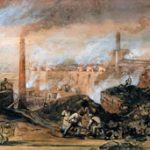A big thanks goes out to the The Center for Appalachian Studies at Appalachian State University for hosting this weekend’s “Appalachia and Wales: Coal and After Coal” symposium. This weekend’s symposium brought together members from both communities face to face.
Wales’ mining industry came to an end in the 1980s. The relationship that has formed between Welsh activists and miners and Appalachians suffering from the same issues, has opened up a dialogue for the two communities to discuss ways that we can learn from one another and help each other out.
A quick review of some of our discussion is below:
Similarities of Appalachia and Wales coal mining:
-Coal mining puts a block on any other form of economy
-Coal is a boom and bust economy in both places
-The cost of lung disease and health problems are not picked up by the coal industry
-Coal, as a resource, leaves the area, along with the profits produced from it
-Coal industry is the only means by which we feel we can sustain our communities
How Appalachia differs from Wales:
-Mining is a lot more widespread in Appalachia
-Appalachia has a separation of labor and environmental movements
-There is an “Insider-Outsider” sentiment in Appalachia
-Climate uncertainty is widespread today
-The is the idea of peak coal has greatly influenced the politics of coal in Appalachia
How can both communities move forward facing such issues? One of the panels produced a discussion on the positive developments coming from both of these regions. Farm to tourism projects are emerging, small businesses such as campgrounds are popping up along roadsides, mining tourism is being developed with museums and tours of mining towns, a new sense of community is sprouting around the fight against the coal industry and the issue to end destructive mining practices.
Amanda Starbuck, director of Rainforest Action Network’s coal finance campaign, was part of a community network in Wales that worked together to build two wind turbines that provide power to over 7,000 residents. Every aspect of the turbines is community owned and operated. She gave the following advice:
1. Learn from and be inspired by the past
2. Resist and Create
3. Invent and Grow in skills and knowledge
Let’s see what we can get done in Appalachia as we work together to solve the coal problem!




Leave a Reply